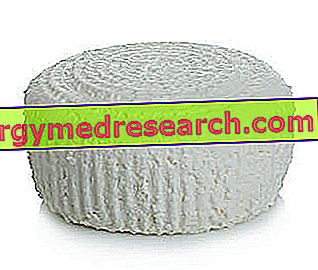Generality
Microdermabrasion is a particular type of aesthetic treatment, used in dermatology to counteract various types of imperfections.

This type of treatment is relatively recent, since it was introduced in Italy only in the 1980s, to then spread abroad in the following years.
What is Microdermabrasion
Microdermabrasion is a medical aesthetic treatment, which aims to mitigate different types of skin imperfections - related to aging and non-aging - by smoothing the skin and stimulating cell renewal .
Among the major blemishes that can be treated with microdermabrasion, we recall:
- Scars of various origins and nature (post-acne scars, post-surgical disfiguring scars, etc.);
- Skin stains and hyperpigmentation;
- Wrinkles;
- Stretch marks.
Microdermabrasion is performed in order to remove portions of superficial skin, thus exerting a smoothing action and at the same time stimulating cell turnover.
To remove the superficial layers of the skin, different materials can be used, among which those most used are corundum crystals (an artificial diamond), or the micro-granules of aluminum hydroxide .
How to do it
Microdermabrasion is a rather simple procedure, more delicate, less invasive and non-traumatic than dermabrasion, since it does not reach the deepest layers of the skin, but exerts a superficial smoothing action.
It is a technique that takes place in an outpatient setting and, generally, without anesthesia, even if in the most sensitive individuals a local anesthesia can be performed if the doctor considers it appropriate.
As mentioned, microdermabrasion makes use of the use of special materials - such as corundum crystals or micro-granules of aluminum hydroxide - which exert a delicate and smoothing abrasive action on the skin.
The microdermabrasion is performed by using a special instrument equipped with a handpiece that conveys the abrasive particles directly onto the skin, so that they can perform their action, and then suck them up immediately after removing in this way also the dead cells that have been removed by the action of crystals or microgranules.
The amount of abrasive substances to be used, and the speed with which they are directed to the skin, are established by the doctor on the basis of various factors, such as the type of imperfection to be contrasted, the area of the face or body to be treated and the general condition of the patient.
Microdermabrasion can be performed either alone, as the only treatment, or in association with chemical exfoliation of the skin (chemical peeling), for example, with alpha-hydroxy acids.
Before and After the Intervention
Regardless of the type of imperfection you want to treat, when you decide to resort to microdermabrasion, it is always good to ask for advice and contact a cosmetic surgeon and / or a dermatologist specialized in the matter, since - however sure - if the microdermabrasion it is performed by inexperienced hands can cause serious damage to the skin and lead to results opposite to those that instead want to get.
After consulting the doctor, it will provide all the indications that the patient must strictly abide by, both before and after the treatment, so as to avoid the onset of complications and side effects.
Also, you need to tell your doctor if you are undergoing chemical peels or other cosmetic treatments that can increase skin sensitivity.
At the same time, your doctor must be informed if you are using topical medications or other products containing retinoids, glycolic acid, benzoyl peroxide or other similar substances.
Furthermore, before undergoing the microdermabrasion session, it is essential:
- Avoid sun exposure and use sunscreens with a high protection factor;
- Avoid waxing in the area to be treated;
- Avoid using exfoliating products of any kind on the skin area that needs to be abraded.
After the microdermabrasion treatment, on the other hand, masks with a soothing action are usually applied and the patient must then take care of his or her skin, nourishing it and hydrating it properly.
If necessary, you can also perform compresses with anti-inflammatory action.
Exposure to the sun should also be avoided after treatment, as at this stage the skin is very sensitive and has lost part of its barrier function. Therefore, it is also necessary to use solar filters with a high protection index.
Results
Usually, the results of microdermabrasion are excellent; even if it is not able to totally eliminate the imperfections, this treatment can however attenuate them considerably.
In general, to obtain significant results, several sessions of dermabrasion must be performed at certain time intervals.
The number of sessions and the time interval that must elapse between one and the other depends on various factors, such as the extent of the area to be treated, the type of imperfection to be treated and the general response of the patient to treatment microdermabrasion.
In any case, indicatively, to obtain appreciable results, five to ten sessions are necessary, to be performed at a distance of about 1-2 weeks one from the other. Afterwards, maintenance sessions can be performed every 2-6 months.
However, it is good to point out that, normally, microdermabrasion is effective only in the case of imperfections (wrinkles, scars, etc.) that are not very deep, while for more marked ones it is necessary to resort to more invasive procedures.
Complications and Side Effects
Usually, microdermabrasion is a delicate and painless procedure that does not cause major side effects.
However, although rare, after microdermabrasion treatment, however, undesirable effects and complications may occur. Among these, we recall:
- bleeding;
- Skin irritation and sensitization;
- Redness;
- Ache;
- excoriation;
- Infections that must be treated with appropriate antibiotic drugs;
- Appearance of hyperpigmented skin spots, generally caused by exposure to the sun immediately before or shortly after treatment.
Contraindications
Although microdermabrasion is a normally well tolerated aesthetic treatment, this procedure may be contraindicated in some cases.
For example, it is not recommended to perform microdermabrasion treatments in individuals with inflamed skin and in individuals who develop Herpes virus infections.
For these reasons, it is always a good idea to inform your doctor of your condition and ask for preventive advice before undergoing any type of aesthetic treatment, even if it is as simple and safe as microdermabrasion.



